Alaska Airlines has had some pretty big news lately. The effects of the Alaska-Virgin America merger began to materialize, with account linking now possible and a points transfer ratio announced (SEE: Alaska Virgin America Transfer Ratio Announced). The airline also rolled out a distance-based chart (SEE: The 4 Alaska Airlines changes I’m most excited about (and the one big negative)) and now allows upgrades on award tickets. All of these changes have been met with generally positive feedback. What excited me most are the new distance-based award prices.
But are there some shenanigans afoot? When pricing out some sample awards today, I was left scratching my head in more than a few instances. The first ticket I tried was ACV-PDX. For all of you who have never seen the ACV airport code, it is for Arcata-Eureka, the tiny regional airport near where I live in northern California.
The flight priced out at 7,500 miles. This was the same price before the changes, oddly enough at the old “intra-state” level, even though it’s not technically intra-state (SEE: We Live in Oregon, According to Alaska).
Since I have been batting around the idea of visiting friends in Montana, I then priced ACV-PDX-MSO. This is where things began to get interesting. The price was an identical to the ACV-PDX ticket: 7,500 miles.
Previously, this award cost 12,500 miles. Using milecalc, I checked the distance, and it rang it at just over 700 miles. The 7,500 mile price should therefore apply, but I didn’t expect it to price out this way with one segment on PenAir metal. I also noticed there were 7,500 mile options with 2 connections, making the trip ACV-PDX-SEA-MSO. Not something I would want to take, considering it is a lot of segments for a relatively small distance.
Still, the distance is within the upper limit for the 7,500 mile award price. Simply for curiosity’s sake I decided to see how things priced out leg-by-leg. I already knew the ACV-PDX leg is 7,500 miles, so I keyed in PDX-SEA. The result was the first true head-scratcher.
How…..? Why? What am I looking at? This is the same exact leg on the same exact ticket I had just priced out. Why does this single leg require 10,000 miles, while the entire ticket requires 7,500? This makes no sense!! I thought Alaska was supposed to have distance-based award prices.
I tried a couple others, just to see if I had the same issue. Portland to Oakland was my first try:
This was puzzling. I had expected the direct PDX-OAK award to price out at 5,000 miles, but not the ticket with a Seattle connection. This ticket is roughly 800 flown miles. Maybe the pricing engine only takes into consideration start and end points? That seems weird. But that is a different issue. I really wanted to test the same puzzling PDX-SEA pricing I had seen in the ACV-MSO example.
This is even crazier than before. Now one leg of the ticket costs *twice* the miles as the the two-leg ticket. Alaska, I don’t understand!
To put this to rest, I cycled through the *entire* calendar for the PDX-SEA route, and the price NEVER dropped below 10,000 miles! Not once. It’s ludicrous. How can Alaska roll out a distance-based award chart, but not actually obey it?
The first shred of an explanation that came to me is that Alaska may be limiting this route in particular? The PDX-SEA route serves two of their hubs, and the two cities are only 3 hours apart by car. Maybe Alaska wants to discourage people from burning miles on this route to keep award seats open for folks with connections? I really don’t know.
But now I am intrigued. I tried a few more routes for kicks, and found a few more puzzles. I tried pricing Arcata/Eureka to Anchorage, and literally nothing came up in the main cabin prices column.
Can it really be that there aren’t any award seats left on any of those flights? I tried other dates in that same week, and got the same result. Now I am wondering if something in the pricing system is broken. I did reach out to Alaska via Twitter about any potential issues in the pricing engine, and all they did was tell me to call reservations to see if space is available. Let’s see what Portland to Anchorage pulls up:
This is surprising. The 20k price is the best I can find, sometimes for months. I expected it to price out at 10k miles, since it is about 1,500 flown miles. There are a few dates in late May that are showing the 10k price (expected), a few more in June and July, and then things actually do open up a lot in August 2017.
This disturbs me, though. Could it be that Alaska has changed their award chart for the better, but is actually limiting the number of these “saver” seats, and then pricing other seats higher than before? This runs completely contrary to having distance-based award prices. It also smells of Delta’s obscure award “chart”.
The 4 questions plaguing me about Alaska’s distance based award chart
After all my testing, I am left feeling more and more unsettled about Alaska’s award chart changes. I had hoped to find some great sweet spots with the new distance-based pricing, but I find I am now looking for answers. To recap, four questions are now plaguing me:
- Is Alaska arbitrarily pricing certain routes (e.g. PDX-SEA)?
- Is Alaska limiting the number of seats available at the new distance-based award prices? Are they then pricing other award seats higher (seems likely yes)?
- Why does availability simply not show for certain routes, when it reliably did before (e.g. ACV-ANC)? I can’t even price ACV-SEA for most dates. Is the pricing tool broken at alaskaair.com?
- Is Alaska moving toward obscured award prices, a la Delta? This seems to run counter to the award prices they just released.
What are your thoughts? Have you found any other oddities in the new Alaska award award prices?
Header image courtesy of Frank K. under CC 2.0 license.
This site is part of an affiliate sales network and receives compensation for sending traffic to partner sites, such as thepointsguy.com. This may impact how and where links appear on this site. Responses are not provided or commissioned by the bank advertiser. Some or all of the card offers that appear on the website are from advertisers and that compensation may impact on how and where card products appear on the site. Any opinions expressed in this post are my own, and have not been reviewed, approved, or endorsed by my advertising partners and I do not include all card companies, or all available card offers. Terms apply to American Express benefits and offers and other offers and benefits listed on this page. Enrollment may be required for select American Express benefits and offers. Visit americanexpress.com to learn more. Other links on this page may also pay me a commission - as always, thanks for your support if you use them

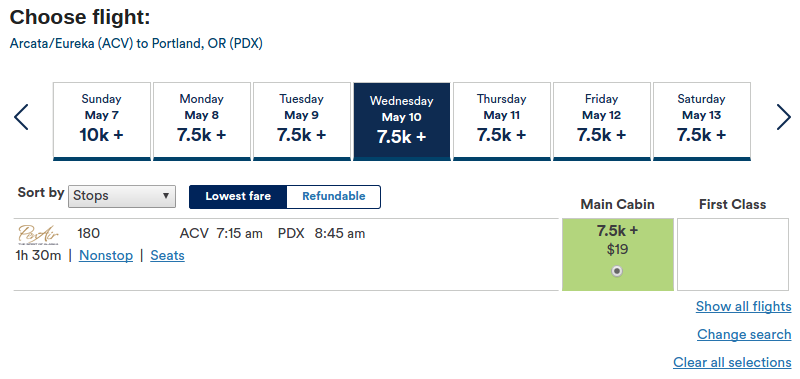
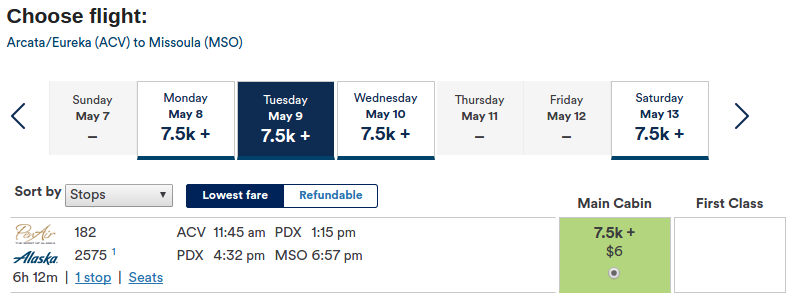
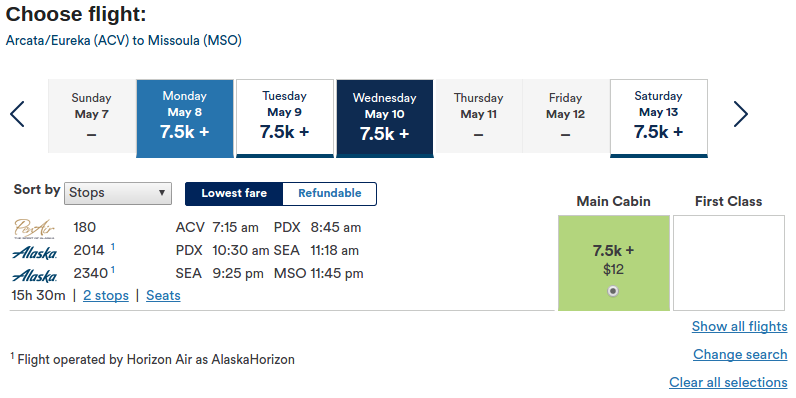
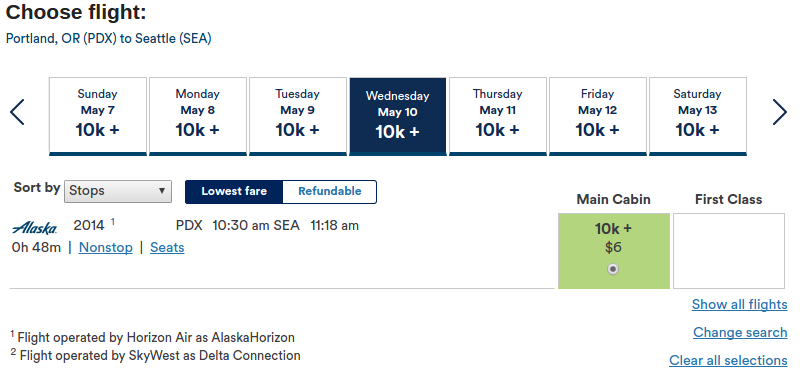
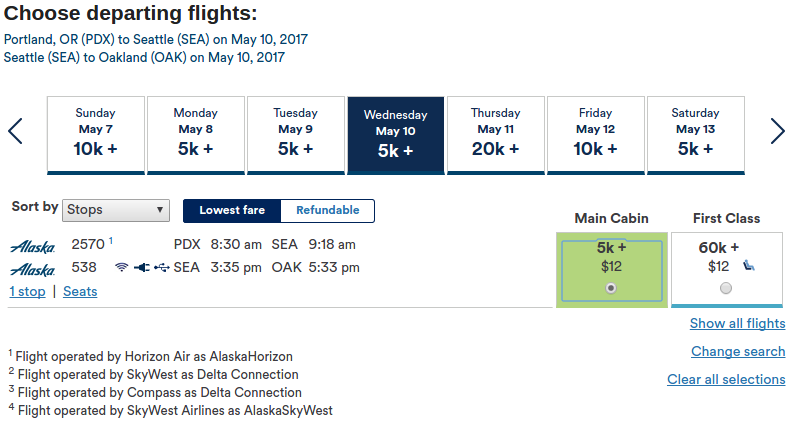
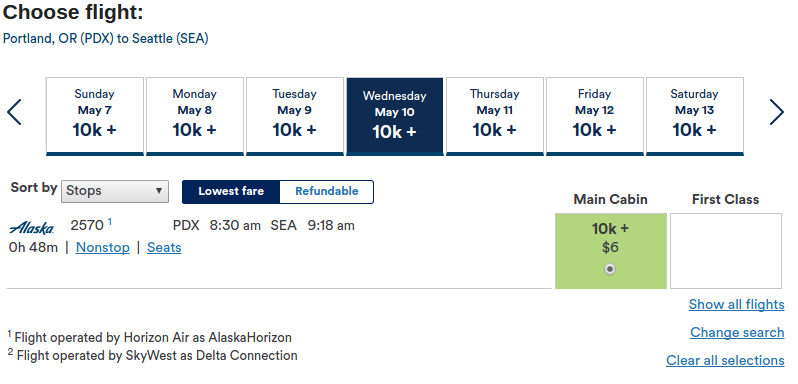
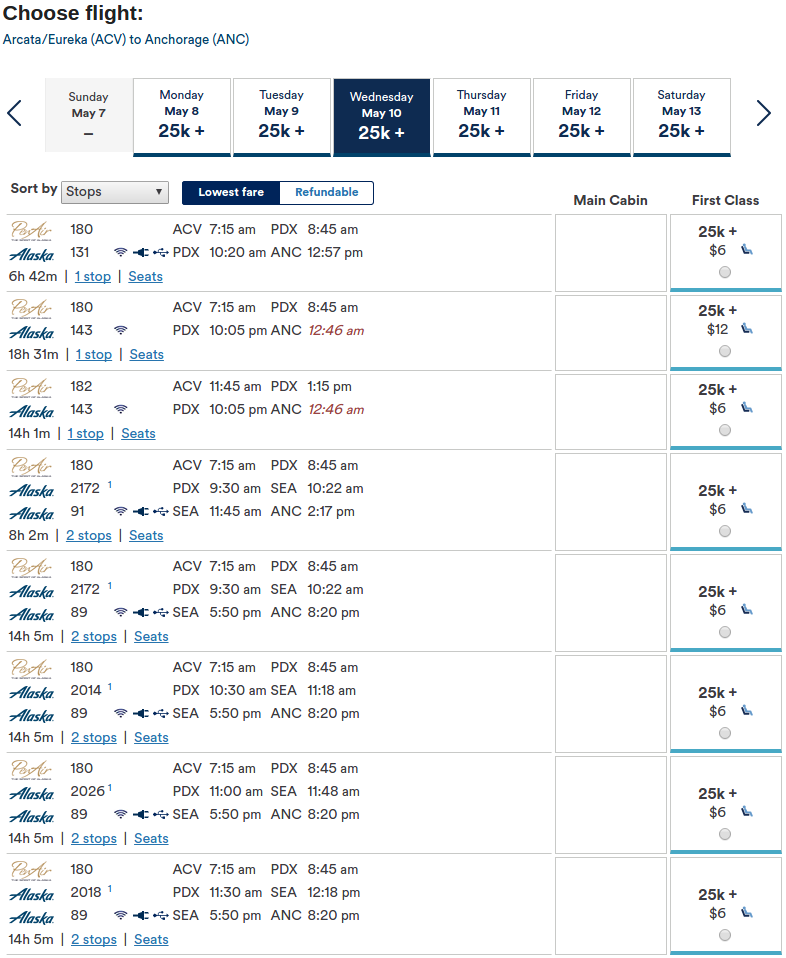
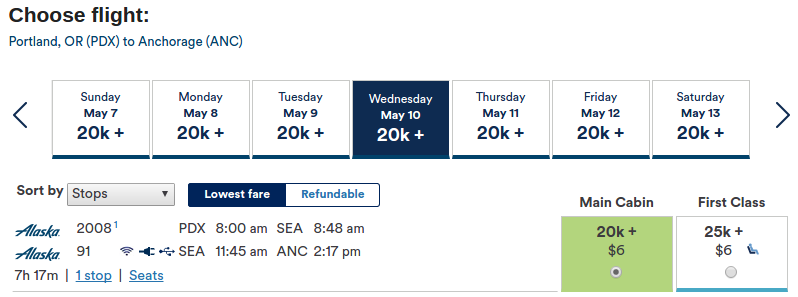

 Dan Miller travels with his wife and 6 (SIX!) children. He loves to help families travel for free / cheap, especially larger families. If you are looking for help, drop him an email at
Dan Miller travels with his wife and 6 (SIX!) children. He loves to help families travel for free / cheap, especially larger families. If you are looking for help, drop him an email at 
The awards price out from departing city to arriving city not taking into account the connecting city.
Do you have a source? Looking at the data so far, I find that I am agreeing with you on this.
I found the same problem. Den to Sea is 12.5k miles. Den to Sea to PDX is 7.5k miles. Grrr…
I believe the new distance-based pricing only applies to Alaska awards, not partner awards. For your first two examples at least, PenAir prices at 7500 miles for flights within Continental US.
For your third example: Alaska’s new prices also indicate a range, where they cap out at 20,000. What they’ve done is effectively add more tiers which allow for some award space towards the bottom end of the spectrum.
I thought that, too, in regard to partner awards, but the ACV-MSO ticket sorta breaks that. One leg is PenAir and the other is Alaksa. It is 5,000 miles cheaper than it was before the changes (not complaining!).
For the other one, this is what worries me. If they do allow for a range (and I agree that it certainly is looking this way), I am worried Alaska will price most space toward the higher end of the spectrum rather than the lower end, effectively making many awards *more* expensive than they were before. Sorta like Delta’s chart during peak times.
For ACV-MSO, I believe you’d still use PenAir pricing because Alaska flights needed to connect with a partner award are free, right? (I’m also relatively new to Alaska’s program, but that’s how I understand it.)
Unlike Delta, Alaska has explicitly said that there is a range (and what the range is). And after the Emirates devaluation, Alaska kind of promised that they will give more notice in the future to any changes to their published charts. But yes, it’s an open question I guess to see what percentage of seats that used to price at, say, the old saver level will now price into a more expensive tier. At least in the short-term, though, since Alaska’s trying to woo over Virgin America customers and their loyalty, I’d guess we’ll be fine for now.
Lots of stuff doesn’t make sense. I looked at MSY-SEA, and it’s 10k. MSY-SEA-LAX is also 10k, as is MSY-SEA-PDX. But MSY-SEA-SFO is 20k, always, which doesn’t make sense. MSY-HNL is always 30k each way, which is nuts.
Yes. The system often now drops the price when a partner segment is added, which is beyond dumb.
Alaska Airlines’ press release says the new distance based chart is the “starting price.” Seems like they have programmed their revenue management system to price awards based on the actual fare or fare bucket (similar to Virgin America.) The fare bucket differences between two cities and connecting cities is why hidden city ticketing exists… Just my two cents…
I was able to book tickets for my family of four from Seattle to SLC in May and it was 5K one way. 40k for four round trip tickets. I was pretty excited about that. Last time we flew to SLC it was 25k each.
Please don’t refer to the 4 Questions in December. You still have a few months to go. 😉
It appears AS requires a 21 day advance purchase for the discounted Saver awards. When I try to price itineraries with less than 21 day advance purchase, I consistently find they cost at least 12.5K miles.